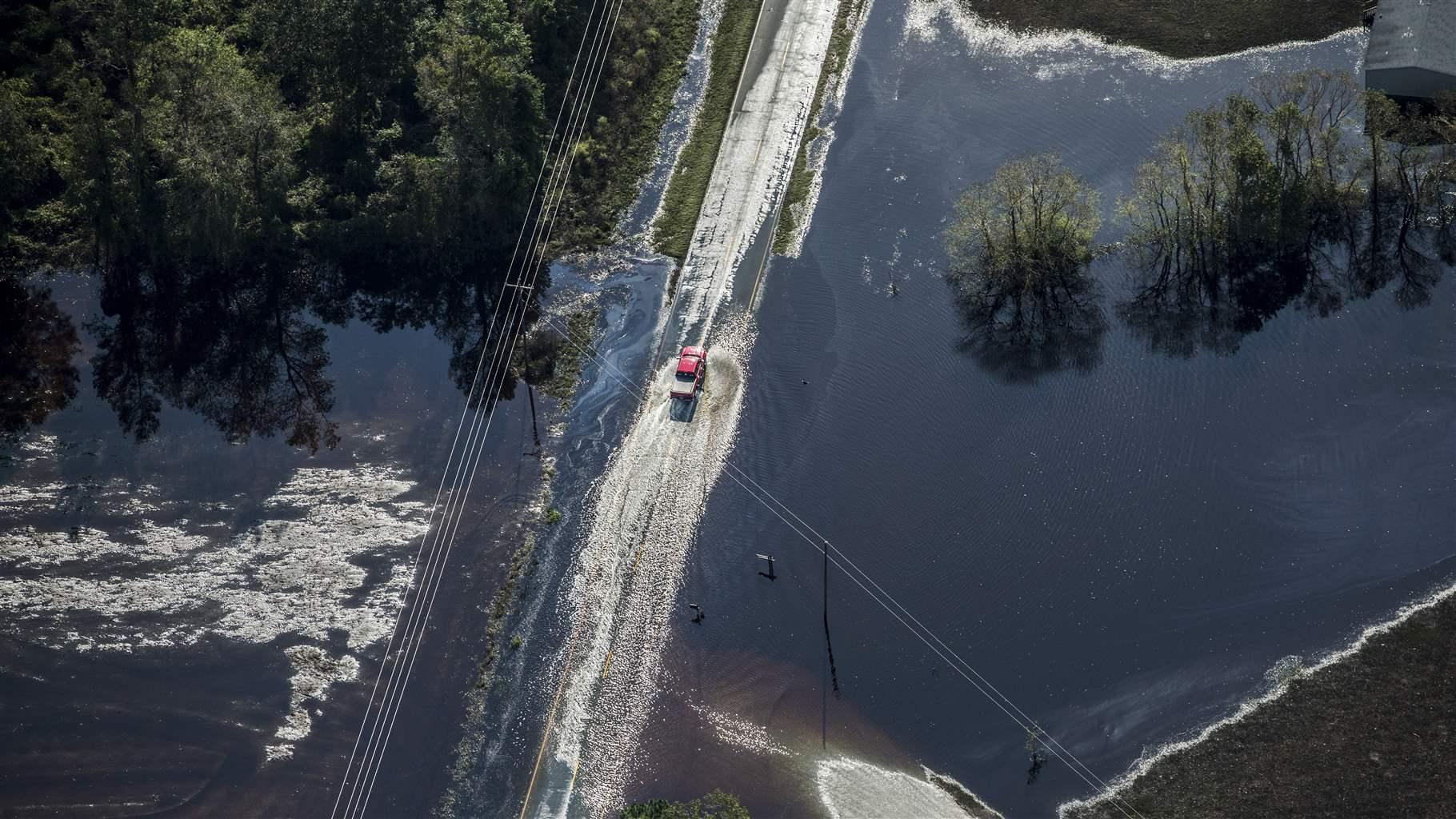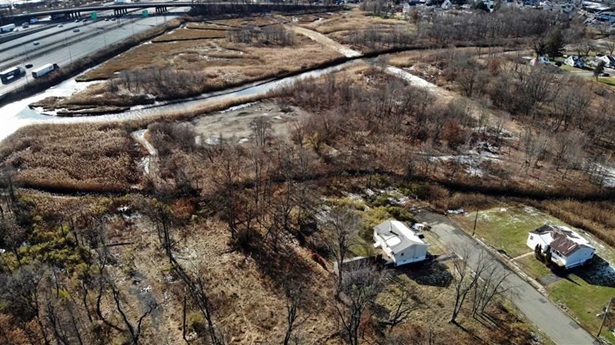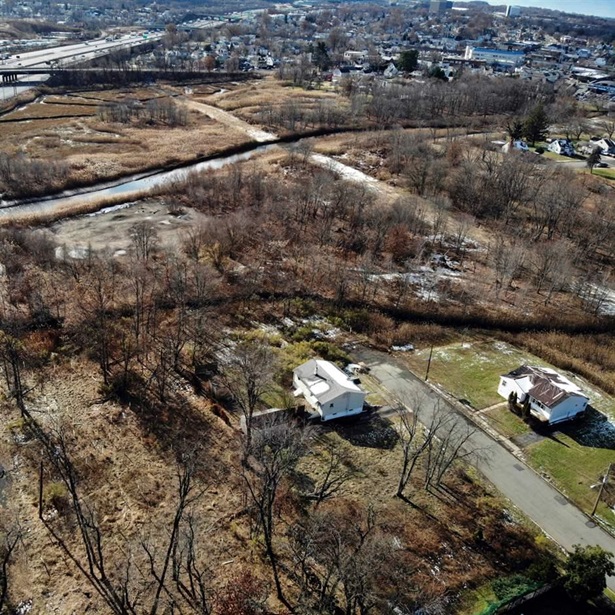North Carolina Leverages Science and Stakeholder Engagement to Guide Flood Resilience Planning
State official shares goals, progress, and next steps in preparing for climate change and natural disasters

Sushma Masemore has played a key role in helping North Carolina address climate change and make the transition to clean energy. As deputy assistant secretary for environment and energy director with the North Carolina Department of Environmental Quality, Masemore is driving implementation of Democratic Governor Roy Cooper’s efforts on those fronts, which include development of the state’s Clean Energy Plan and the recently released Climate Risk Assessment and Resilience Plan. The Pew Charitable Trusts spoke with Masemore to learn why the resilience plan is important, how it was developed, and what it means for communities across the state. This article has been edited for clarity and length.
Q: Your state has extensive coastline, mountains, big rivers, piedmont, and other terrain. How does flood risk vary in these different areas of North Carolina?
A: Each region of the state faces different risks. Coastal communities experience surge flooding from hurricanes and other storms, along with higher tides and sunny day flooding fueled by sea level rise; eastern North Carolina experiences river basin flooding driven by heavy rains or extended large-scale rain events; the western part of the state sees landslides after heavy rains; and flash flooding of creeks and rivers is an issue across the state.
Q: What prompted North Carolina to develop a risk and resilience plan?
A: Governor Cooper called for the Climate Risk Assessment and Resilience Plan in a 2018 executive order that committed to statewide climate action. The order recognizes that we must build resilient communities and develop strategies to mitigate and prepare for climate change impacts in order to support our state’s economic development. Specifically, state agencies are directed to integrate resilience strategies in state agency planning, support communities that are interested in assessing and developing resilience strategies, and develop the state’s Climate Risk Assessment and Resilience Plan.
Q: How have you collaborated with residents, academia, businesses, and others to help communities better prepare for flooding and other natural disasters?
A: The risk and resilience plan is the result of nearly a year of collaborative work and partnership with federal, state, and local government; residents; academia; communities; and industry. The impacts of flooding and natural disasters are not new to North Carolina communities, and we worked with partners across the state through regional workshops and stakeholder meetings in developing this plan to ensure their experiences, concerns, and needs were represented. This effort was built on leveraging existing partnerships, and the plan outlines additional areas where collaborative work needs to be conducted in the future.
Q: Can you speak to the role of science in assessing the state’s risk?
A: A key piece of the plan is the Climate Science Report, an in-depth look at what North Carolina has experienced and may face based on the data under specific scenarios. Climate science experts at the North Carolina Institute for Climate Studies, a partnership of universities, the private sector, nonprofits, community groups, and federal agencies, led a team that worked with state agencies to develop a peer-reviewed assessment of historical trends and potential future climate changes. Each facet of the plan is built on that scientific assessment and will continue to support each agency’s resilience planning going forward.
Q: That sounds promising. What are the next steps to take this plan from paper to implementation?
A: Some of the actions detailed in the plan are already underway, and each state agency is working to incorporate resilience actions and recommendations through its own processes. The plan also builds upon North Carolina’s ongoing work and establishes the North Carolina Resilience Strategy, which includes four elements: the North Carolina Climate Science Report; State Agency Resilience Strategies, which each agency will complete in the next year; Statewide Vulnerability Assessment and Resilience Strategies, which is a two-phase process occurring in the next four years; and the North Carolina Enhanced Hazard Mitigation Plan, which will be finalized in 2023.
Q: How do the risks associated with the COVID-19 pandemic overlap with flood risk in the state, and why is it important to continue with resilience planning during this time?
A: Minority populations are more likely to experience the damaging and destabilizing effects of climate change and are less likely to be able to recover from a climate hazard. Those are the same communities that are being disproportionally impacted by COVID-19. Climate justice and the efforts to make vulnerable communities more resilient involves some of the same inequities the pandemic is highlighting. Systemic racism is a large factor in who has access to health care, who lives in substandard housing, and who has the financial ability to survive when a disaster or pandemic happens, as we have seen in recovery following hurricanes Matthew and Florence, and with COVID-19. We need to create strategies that address those systemic factors, so we build resilience to all future disasters, whether they are climate- or health-related.














